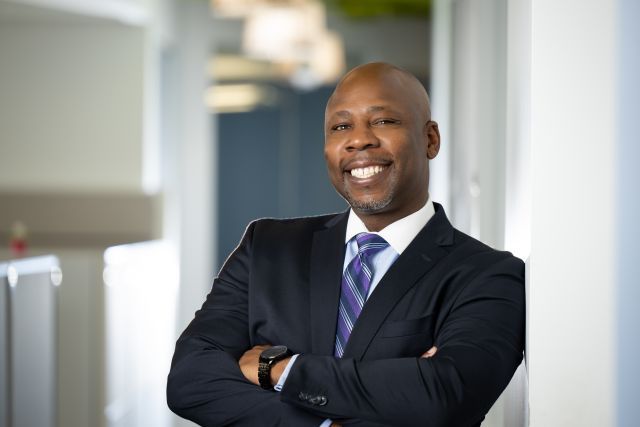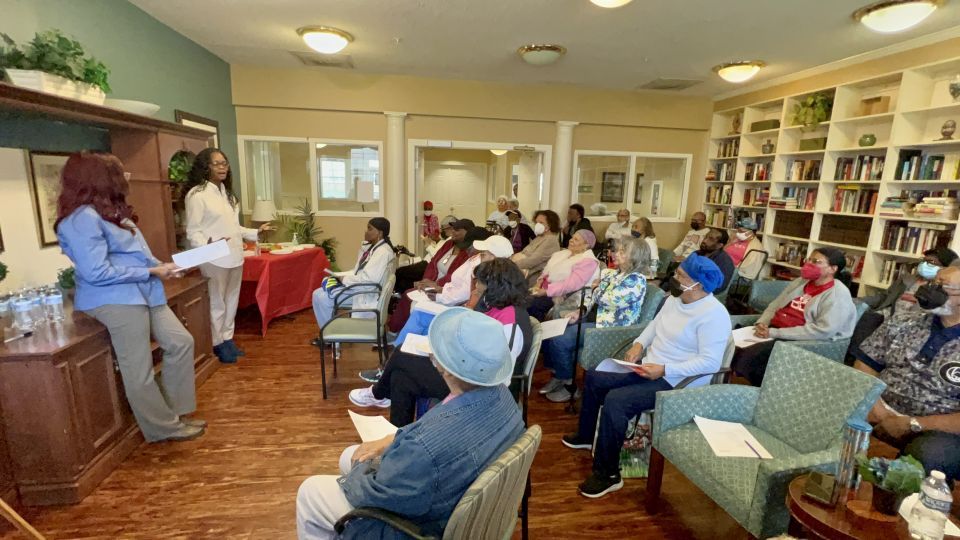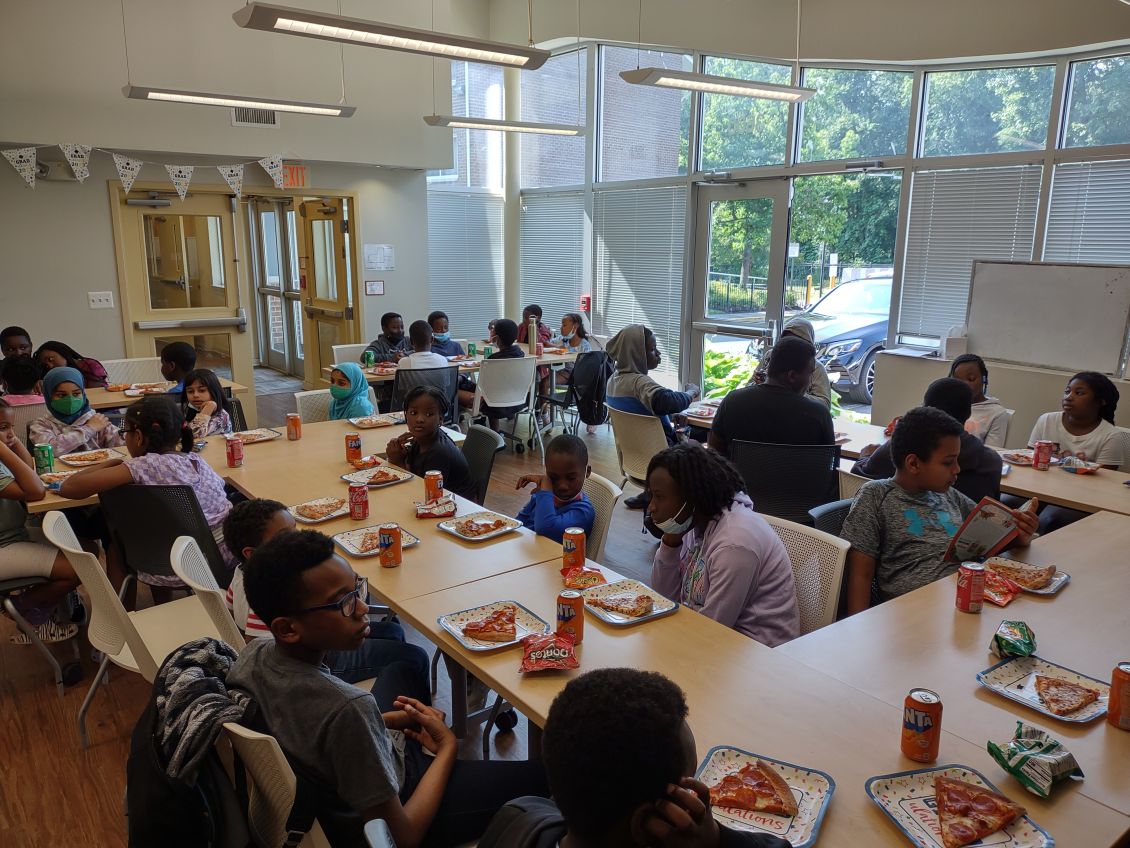A year-and-a-half ago, Nii Sowah and his team asked themselves a question: Coming out of the Covid pandemic, how could they do a better job engaging with kids both virtually and in person to help bridge gaps in school achievement? They were looking specifically at Fairfax County, Virginia, where Enterprise Community Development oversees an after-school enrichment program at two multifamily properties.
That renewed focus is yielding results in 2023. “We just got some great news,” said Sowah, vice president of Community Impact at Enterprise Community Development. “We were informed that the 49 students that were part of this program all met or exceeded grade-level exam scores. That was huge for us, especially coming out of Covid, and a strong validation for the work we do to support residents.”
Good news from Fairfax County is just one reflection of Enterprise Community Development’s efforts to provide a wide range of services to 23,000 residents in 13,000 homes across the Mid-Atlantic region. We spoke with Sowah recently about his team’s work to support services and programs designed to empower the people who live and work in affordable housing. “With resident services, we’re intertwined with other business units – and the broader community – to advance our body of work,” Sowah said. “We’re strongest when we’re listening to and engaging with the people who live in our communities.”

How is providing services to residents of affordable housing core to Enterprise’s mission?
It’s core on so many different levels. We’re the largest affordable housing provider in the Mid-Atlantic so the organization has made a significant investment in residents’ wellbeing. For Enterprise Community Partners overall, resident services fit squarely into the mission, especially in creating platforms for resilience and upward mobility for families and individuals. Resident services are not something we just do, they’re a part of our fabric as an organization.
And speaking more broadly, we’re charged with ensuring our resident services platform meets the needs of our own residents, but also within the industry. Being such a large provider with hands on engagement in communities every day, we have an opportunity to learn and share best practices with our peers and partners.
How does the work you are doing in the Mid-Atlantic region serve as a model for how Enterprise looks at the importance of resident services?
With our body of work, we start with the policy side and move all the way to direct services. In that way, we can connect the theory with the actual practical application in the Mid Atlantic.
Within all our work, there’s a lot of space to identify lessons learned and challenges. Being able to connect with other Enterprise divisions and business units that are engaged with resident services at some level – whether its policy or grants level – we can engage, learn, and translate into direct services.

How did Community Development determine which services to prioritize?
This is where I get really excited about the work because it’s where we see the impact on peoples’ lives. Last year we went through a year-long process to define our “strategic outcomes framework,” where we landed on our four impact areas, which are: community building and engagement, health and wellness, economic security and mobility, and education.
When we’re looking at how we design our services, it’s all about hearing from our residents. We do that through direct contact, and we engage them at our “Resident Voices” community meetings so we can hear in real time what is happening. We also value input from the partners we work with including community-based organizations.
What impact do you expect to achieve with your prioritized program offerings?
Over the next 12-18 months, we’re planning to build on our resident services platform so that we can be more even responsive to our residents. Timing is everything and we’re focused not only on providing access to services, but also building trust. We also want to ensure the services we provide are relevant for all of our age demographics – and that’s critical because at least half of our portfolio caters to our seniors and older adults. We’re also very focused on services for our working adults and our family communities that have school aged children.
Looking ahead, we’re evaluating the best ways to scale our programming while ensuring we still achieve the resident impact we’re looking for. We’d like to expand some of our current initiatives and pilots into new locations and regions. Overall, we’re expecting a deeper impact that positions us for long-term sustainability.
What programs and initiatives are you seeing the most significant impact from right now?
Specifically, we’re seeing progress around our work with senior communities, working with our Solutions team to allow residents to age in place with dignity. We launched our Aging Well program in September of 2022 with the University of Maryland as a key regional and we’ve seen a big impact already at a handful of our properties in Baltimore County and one in Baltimore City.
In addition, we’re seeing good results in our benefits screening work helping residents apply for benefits to leverage their fixed incomes. Our healthy eating programs are also showing a lot of promise, whether it’s creating greater access to onsite food pantries, connections to a local food bank, or promoting senior meal programs and delivery services.
Overall, it’s about trust and engagement. For the Resident Voices initiative, we’re aiming to have 100% participation – we’re now at 82%. On a quarterly basis, every community schedules time for sharing of resources and dedicated time to hear the concerns of residents. We’re also looking to include a formal feedback loop so that residents understand how we’re addressing concerns.
Any new programs/initiatives you want to highlight?
I’m especially excited about our ECD Success program, which is a 3-year pilot to connect working adults with training partners that can provide recognized certifications as well as a placement service for employment. The areas include construction, IT, health sector administration – these are great opportunities for our residents.
Another program – ECD Connects – addresses the digital divide. Project Waves is a part of that. Another area is ECD Reads, where we’re working to address challenges in education and ensuring our residents from younger to older have access to reading materials. We’re setting up libraries and monthly book subscriptions to address literacy while making the process as easy as possible and not intimidating.
What are your biggest challenges?
The biggest challenge is how to scale these programs across our communities. We’ve determined what residents identify as need. Now it’s scale and the funding that comes along with it. This level of work – especially in communities that require more intense engagement – requires a partner or staff to be able to own that relationship. We’re working in close partnership with our fundraising teams to build interest and support for these initiatives.
Any other resident success stories you can share?
There are many, but one important one comes to mind. In one of our Baltimore County communities, clinicians come to do screenings, to connect residents with food security programs, and provide referrals to other medical professionals. One older resident had become confused with her medications – how to make sure she was taking the right ones at the right time. This team worked diligently with her to help her organize the pills she needed to take, connect with her doctor, and suggest other vitamins, while also identifying an issue with high blood pressure. This simple-seeming intervention might have saved her life. It’s just one example and there are many more like this, where we can have a big impact on someone’s quality of life.
